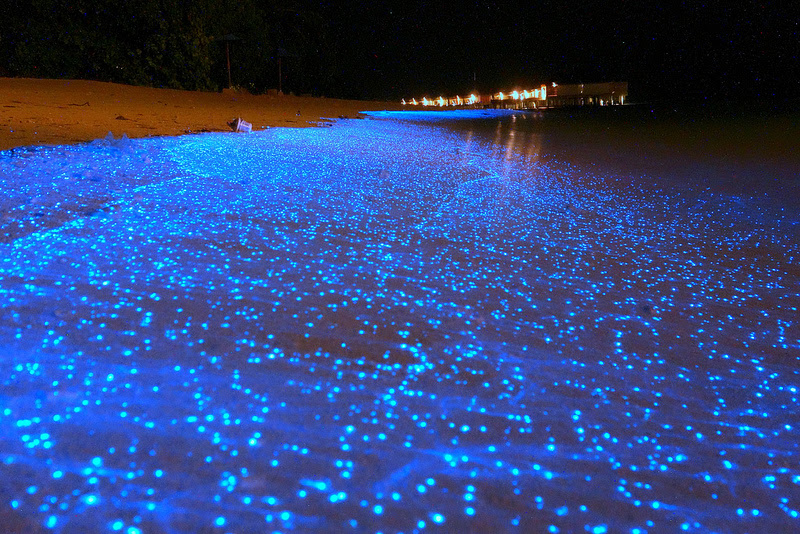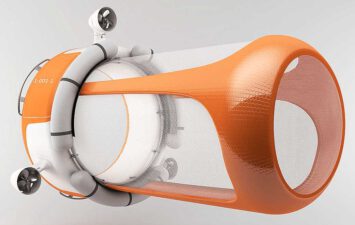 Millions of bioluminescent phytoplankton set a stretch of Maldives beach aglow, captured in these gorgeous photos by Taiwanese photographer Will Ho. These tiny organisms emit an eerie green-blue light when agitated by breaking waves or objects moving through water. They can cause thousands of square miles of ocean to gleam in a phenomenon known as the “milky seas effect”.
Millions of bioluminescent phytoplankton set a stretch of Maldives beach aglow, captured in these gorgeous photos by Taiwanese photographer Will Ho. These tiny organisms emit an eerie green-blue light when agitated by breaking waves or objects moving through water. They can cause thousands of square miles of ocean to gleam in a phenomenon known as the “milky seas effect”.
The Maldives are in the Indian Ocean, but scientists at University of California, San Diego say bioluminescence is particularly common in the Arabian Sea following monsoons, and in any waters hosting algae blooms commonly called “Red Tides”. Read about Red Tides here that threaten desalination plants in Oman.
Bioluminescence results from a chemical reaction that produces light energy within an organism’s body. The host organism must possess luciferin, a molecule that reacts with oxygen to create light.
It’s the same marvel you see in fireflies. The ocean’s animals, from bacteria to sharks, can also do the trick. Jellyfish, worms, crustaceans, and many fish species can rival the stars when it comes to nocturnal twinkling.
 For those willing to swim in organic sludge, the experience can be ethereal. Poke around YouTube to see kayakers, swimmers, and surfers who have braved a nighttime dip. I’ve splashed in San Diego wash-ups with my then-toddler son, who scrambled to catch the dazzling drips roiling around his feet; it is something to behold.
For those willing to swim in organic sludge, the experience can be ethereal. Poke around YouTube to see kayakers, swimmers, and surfers who have braved a nighttime dip. I’ve splashed in San Diego wash-ups with my then-toddler son, who scrambled to catch the dazzling drips roiling around his feet; it is something to behold.
 My older brother lives in Santa Cruz, California and, with nearly five decades of surfing under his belt, told me, “A red tide in the Pacific is an algae event where the water, instead of being clear, becomes coffee-colored or reddish and tastes like crap. It’s a natural event and passes in a week.”
My older brother lives in Santa Cruz, California and, with nearly five decades of surfing under his belt, told me, “A red tide in the Pacific is an algae event where the water, instead of being clear, becomes coffee-colored or reddish and tastes like crap. It’s a natural event and passes in a week.”
He tells of surfing in New Jersey where we grew up, “In Beach Haven if you swam at night, and if you slapped the water, it made the plankton light up like a firefly. You’d see a stream of yellow or a foot-long flash and then it would dissipate.”
He also observed this in Puerto Rico one night while bodysurfing; his body cut the water leaving a streak of light, very pretty. I need to get him to Oman to see what he could light up on their shores.
The function of the phenom remains a mystery, but is likely a device to warn predators, to lure prey, or to communicate between members of the same species. Given the enormity of the world’s seas and the myriad creatures that claim them as habitat, bioluminescence may be the most common form of communication on the planet.
Images by photographer Will Ho




Comments are closed.